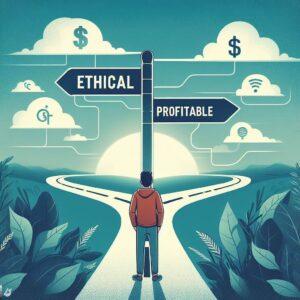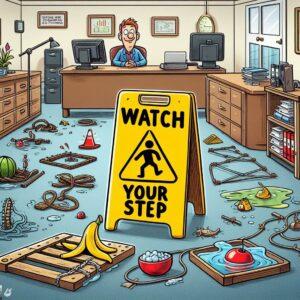Introduction
IEEE Software Engineering Code of Ethics

The Institute of Electrical and Electronics Engineers (IEEE) is the worlds largest professional organization for the advancement of technology. All members of the organization agree to abide by its code of ethics, which details how members should conduct themselves – The IEEE Code of Ethics.
The code details 10 rules:
- Ensuring the safety of the public & the environment
- Educating individuals and society
- Avoiding conflicts of interest
- Avoiding unlawful conduct
- Being honest in claims and criticism
- Maintaining technical competence
- Avoiding discrimination
- Avoiding harassment
- Avoiding hurting others
- Supporting each other
Rule 1
Rule 1 – Ensuring the safety of the public & the environment

To hold paramount the safety, health, and welfare of the public, to strive to comply with ethical design and sustainable development practices, to protect the privacy of others, and to disclose promptly factors that might endanger the public or the environment.
Example
An electrical engineer working on a construction project discovers a design flaw that could potentially compromise the safety of the building. The engineer promptly reports the issue to the project manager to ensure corrective action is taken.
Rule 2
Rule 2 – Educating individuals and society

To improve the understanding by individuals and society of the capabilities and societal implications of conventional and emerging technologies, including intelligent systems.
Example
A computer scientist engages in public outreach and education programs to teach students about responsible internet use and the risks associated with cyberbullying.
Rule 3
Rule 3 – Avoiding conflicts of interest

To avoid real or perceived conflicts of interest whenever possible, and to disclose them to affected parties when they do exist.
Example
A software developer working for a tech company recuses themselves from a project involving a vendor with which they have a personal financial interest, ensuring transparency and avoiding any potential bias.
Rule 4
Rule 4 – Avoiding unlawful conduct

To avoid unlawful conduct in professional activities, and to reject bribery in all its forms.
Example
An engineer is offered a bribe to approve substandard materials for use in a construction project. The engineer refuses the bribe, reports the incident, and insists on using only approved materials to maintain safety standards.
Rule 5
Rule 5 – Being honest in claims and criticism

To seek, accept, and offer honest criticism of technical work, to acknowledge and correct errors, to be honest and realistic in stating claims or estimates based on available data, and to credit properly the contributions of others.
Example
A data scientist accurately reports the limitations and uncertainties of a predictive model they’ve developed, ensuring that stakeholders understand the potential for error in the predictions.
Rule 6
Rule 6 – Maintaining technical competence

To maintain and improve our technical competence and to undertake technological tasks for others only if qualified by training or experience, or after full disclosure of pertinent limitations.
Example
A network administrator declines to take on a complex cybersecurity task beyond their expertise and recommends hiring a cybersecurity expert to ensure the task is completed competently.
Rule 7
Rule 7 – Avoiding discrimination

To treat all persons fairly and with respect, and to not engage in discrimination based on characteristics such as race, religion, gender, disability, age, national origin, sexual orientation, gender identity, or gender expression.
Example
A team of engineers ensures that all team members are treated with respect and have equal opportunities to contribute, regardless of their gender or background.
Rule 8
Rule 8 – Avoiding harassment

To not engage in harassment of any kind, including sexual harassment or bullying behavior.
Example: Reporting Workplace Bullying
At a tech company, Alex faced consistent bullying behavior from a colleague, Taylor. Alex reported this to their supervisor, Sarah, who promptly investigated the issue. Confirming the bullying, the company took action, requiring Taylor to attend training on appropriate workplace behavior.
Rule 9
Rule 9 – Avoiding hurting others

To avoid injuring others, their property, reputation, or employment by false or malicious actions, rumors or any other verbal or physical abuses.
Example
A software developer rigorously tests a new application to identify and fix any security vulnerabilities before releasing it to the public, preventing potential harm to users.
Rule 10
Rule 10 – Supporting each other

To support colleagues and co-workers in following this code of ethics, to strive to ensure the code is upheld, and to not retaliate against individuals reporting a violation.
Example: Whistleblower Protection in a Tech Company
Sarah, an employee at a tech company, discovered her team lead engaging in unethical data practices. She reported it to her supervisor, Mark. Mark investigated the issue, confirmed the violation, and took action against the team lead. Throughout, Mark assured Sarah that her job and reputation would not be harmed for reporting the violation, encouraging others to do the same. This demonstrated support for colleagues following the code of ethics and upheld a culture of ethics in the company.